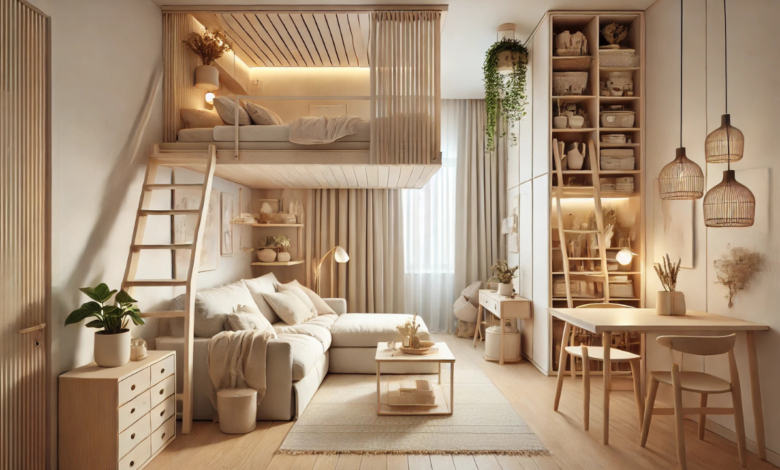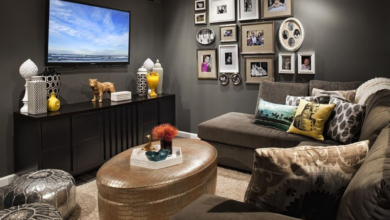Munting: The Beauty of Small-Scale Living and Design

In today’s fast-paced world, many individuals find comfort in simplifying their lives and embracing minimalist principles. One such movement that has gained momentum in recent years is “munting,” a term that refers to the beauty of small-scale living and design. Derived from the Filipino word for “small” or “tiny,” munting focuses on creating functional and aesthetically pleasing spaces using limited resources while maintaining a sense of harmony and creativity.
Once perceived as a temporary or minimalist choice, small-scale living has transformed into a lifestyle for many. Whether in the form of tiny homes, micro-apartments, or even small-scale art projects, munting emphasizes the potential of compact spaces to foster creativity, sustainability, and a more intentional way of life.
The Essence of Munting: A Return to Simplicity
Munting is more than just a design philosophy; it’s a return to simplicity and intentional living in a world cluttered with consumerism and excess. The. The beauty of munting lies in its focus on quality over quantity. It’s about creating functional, comfortable, and visually appealing spaces despite their smaller scale.
The concept encourages the idea that smaller living spaces can be just as fulfilling and stylish as more significant, extravagant homes; by eliminating unnecessary clutter and using design elements emphasizing efficiency and functionality, munting fosters an environment where individuals can feel more connected to their surroundings, leading to a simpler, more balanced life.
The Appeal of Small-Scale Living: Benefits and Advantages
There are numerous reasons why small-scale living is becoming increasingly popular. For some, it offers an opportunity to downsize and reduce their carbon footprint. For others, it may be a way to minimize expenses and focus on experiences rather than material possessions—the appeal of munting lies in its ability to offer practical solutions without sacrificing style.
Here are some of the key benefits of embracing munting and small-scale living:
- Lower Costs: Smaller living spaces naturally come with lower rent or mortgage payments, utilities, and maintenance costs. With fewer materials to furnish a home, munting can significantly reduce monthly expenses, making it an attractive option for those seeking financial freedom.
- Sustainability: By opting for smaller homes and designs, munting encourages sustainability. Fewer resources are used in construction, and less energy is required to heat or cool the space. Additionally, smaller homes often require fewer consumables, reducing waste and promoting eco-friendly living.
- Personalized Design: When living in a small space, every element of the design must be carefully considered. This presents an opportunity to create a highly personalized and unique living environment. Munting allows individuals to use every inch of space, from multifunctional furniture to clever storage solutions, while maintaining a clean and cohesive aesthetic.
- Less Clutter, More Freedom: Small-scale living often comes with the realization that not everything is necessary. People who embrace munting learn to prioritize what they truly need and enjoy, letting go of excess possessions. This creates a sense of freedom and clarity, fostering an environment that nurtures creativity and mental well-being.
- Sense of Community: Many small-scale living environments, particularly tiny homes and shared spaces, foster a stronger sense of community. Individuals in smaller living spaces often collaborate, share resources, and build stronger relationships with their neighbours, contributing to a more supportive and connected environment.
Munting in Design: How Small Spaces Can Be Beautiful and Functional
Munting extends beyond just living arrangements—it’s also a design principle that encourages beauty in small spaces. When applied to interior design, munting creates multifunctional and space-efficient areas that don’t compromise style. Here are some key design principles often associated with munting:
- Multifunctional Furniture: In small spaces, every piece of furniture needs to serve more than one purpose. For example, a sofa that doubles as a bed or a dining table that can serve as a workspace is standard in munting interiors. This allows homeowners to make the most of every square inch without sacrificing comfort or style.
- Vertical Design: Small-scale living often encourages using vertical space creatively. Lofted beds, tall shelving units, and hanging plants are standard in munting designs. Vertical design maximizes floor space and draws the eye upward, making the space feel more open and airy.
- Natural Materials: Munting interiors often incorporate natural materials such as wood, stone, and metal to add warmth and texture to the space. These materials help create a cosy atmosphere and bring a sense of connection to the natural world, even in the smallest of spaces.
- Neutral and Light Colors: Light, neutral colours like whites, beiges, and soft greys can make a small space more expansive and welcoming. These colours reflect natural light, making rooms feel brighter and more prominent. Accents of bold colour can be used sparingly to add personality without overwhelming the space.
- Simplicity and Clean Lines: One of the core principles of munting is simplicity. Clean, straight lines and minimalist design elements are key to achieving a calm and uncluttered environment. This approach is essential in small spaces, as it allows the eye to move freely around the room without distractions.
How Munting Promotes Sustainability and Eco-Friendliness
As climate change becomes an increasing concern, the trend of small-scale living also aligns with eco-friendly principles. Munting encourages a sustainable lifestyle by minimizing energy consumption, reducing waste, and promoting mindful consumption.
- Energy Efficiency: Smaller homes naturally consume less energy. With fewer square feet to heat or cool, energy bills are often lower in tiny homes and apartments. Many individuals embracing munting also incorporate energy-efficient appliances, solar panels, and other green technologies to reduce their carbon footprint.
- Upcycling and Reusing Materials: Munting encourages using recycled and upcycled materials. Whether it’s reclaimed wood for furniture or vintage décor, incorporating secondhand items into a home saves money and reduces the environmental impact of producing new goods.
- Smaller Carbon Footprint: A smaller home typically means less waste. By living with fewer possessions and less disposable goods, individuals can reduce their overall consumption and contribute to a more sustainable future.
Munting: A Growing Trend in the Modern World
Munting is more than just a passing trend; it represents a shift in how we approach living spaces, design, and lifestyle. Whether through tiny homes, apartment-sized décor, or smaller-scale arts and crafts, this movement invites individuals to rethink how they live, work, and interact with their environment.
Munting offers a refreshing perspective on simplicity, beauty, and functionality in a world that prioritizes excess and expansion. As more people seek to live intentionally and reduce their environmental impact, the beauty of small-scale living and design will continue to captivate those looking for a more straightforward, meaningful way to live.
FAQ about Munting: The Beauty of Small-Scale Living and Design
1. What is mounting in design?
Munting refers to small-scale living and design, where compact spaces are optimized for functionality, beauty, and sustainability. The term comes from the Filipino word for “small,” it emphasizes creating efficient, aesthetically pleasing environments in small areas.
2. How does munting contribute to sustainability?
Munting promotes sustainability by encouraging smaller homes that use fewer resources, require less energy, and reduce waste. Small living spaces naturally have a smaller carbon footprint, and many individuals who embrace munting also incorporate energy-efficient appliances, upcycling, and mindful consumption practices.
3. Can munting work for families or only individuals?
While munting is often associated with individual living spaces like tiny homes, it can also be adapted for families. Many families are opting for smaller, more efficient homes and using multifunctional furniture and creative space-saving solutions to accommodate their needs.
4. What are some design principles of munting?
Key design principles of munting include multifunctional furniture, vertical design to maximize space, the use of natural materials, neutral colour palettes, and a focus on simplicity and clean lines. These elements create functional, stylish, and open environments in small spaces.
5. Is munting affordable?
Yes, munting can be a cost-effective option. Smaller spaces often come with lower rent or mortgage payments, reduced utility costs, and fewer furnishings to buy. The minimalist approach of munting can also help individuals focus on experiences rather than material possessions, further contributing to financial savings.
You May Also Read:https://usabestweekly.com/




